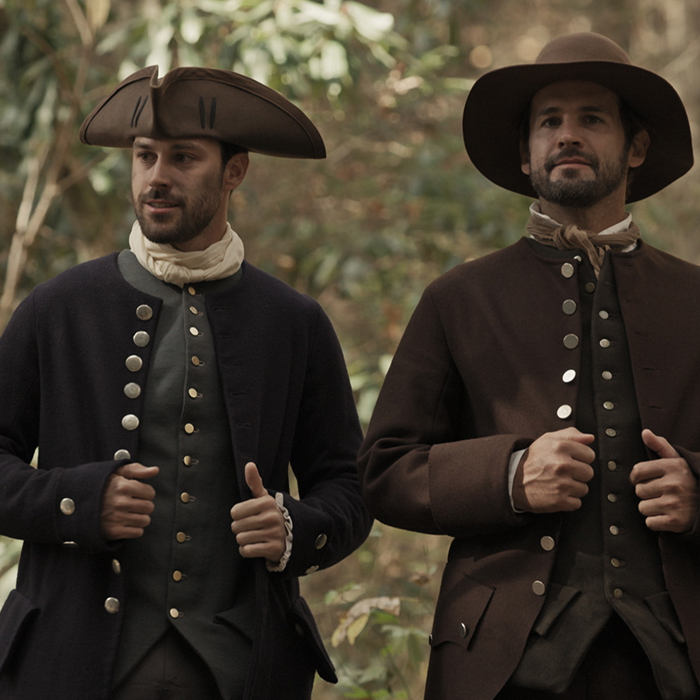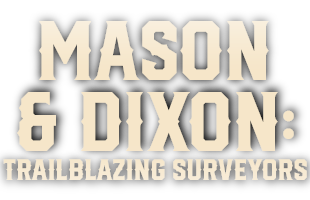
Charles Mason & Jeremiah Dixon
World-famous astronomers and surveyors, Charles Mason and Jeremiah Dixon, were brought to the colonies to mark a border across impossible terrain, laying down what would become the very center of America: the Mason-Dixon Line.
Charles Mason (April 1728 – October 25, 1786) worked at the Royal Greenwich Observatory in London and served as Assistant Astronomer under the third Astronomer Royal.
Jeremiah Dixon (July 27, 1733 – January 22, 1779) was a land surveyor, astronomer, and a Fellow of the Royal Astronomical Society.
In 1761, Astronomer John Bird most likely suggested that his friend, Jeremiah Dixon, serve as Charles Mason’s assistant on a tip to Sumatra to observe the transit of Venus. This was the first time the pair worked together.
Two years later, when the Astronomer Royal was asked to recommend men who could solve a border conflict between the colonies of Maryland and Pennsylvania, Charles Mason and Jeremiah Dixon were chosen.
The pair arrived in November 1763, put together a team, and got to work. Mason and Dixon relied on complex tools (which the colonists did not have); sophisticated astronomical and land surveyance practices; and painstaking ground measurements. The work was meticulous and time-consuming as they battled harsh terrain, unforeseen obstacles, and inclement weather.
The survey was supposed to be done in 12 months—but 58 months later, the border between Maryland and Pennsylvania was defined…and the Mason-Dixon Line was born.







